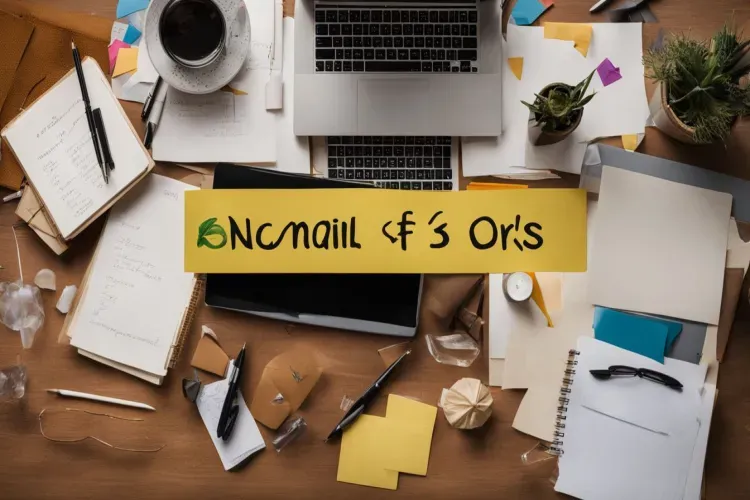Are you tired of sending emails only to have them bounce back? Good news – tools exist that let you check email addresses without the hassle. Our guide will show you simple methods to make sure your contacts are correct and ready for your emails.
Get ready to boost your email success!
Verify An Email Address Without Sending Email

Verifying an email address before you hit send saves time and keeps your list clean. For real estate agents, reaching out to the right inbox is key. You don’t want to waste a shot by sending details of a new listing to an invalid email.
I learned this the hard way during my early days in the business. A hot lead went cold because my message bounced back from a misspelled address.
Using tools like email checker or running a quick test on Gmail can help make sure the addresses are good. It’s about making every effort count and ensuring your messages land where they should.
This step also helps avoid spam filters, keeping your sender reputation intact and boosting deliverability rates for future campaigns. So, checking if an email exists before sending isn’t just busy work; it’s smart strategy that positions you closer to sealing more deals.
Efficient Ways to Verify an Email Address Without Sending an Email

Finding out if an email works without actually sending a message can save you time and hassle. You can use special online services or even check with certain well-known email providers, and look up where the email comes from on the internet to see if it’s real.
Using Email Verification Tools
Email verification tools are a game changer for real estate agents and realtors. They make checking if an email address is valid, quick, and easy without sending emails out. Here’s how to get the most out of these tools:
- Choose a good tool: Start with picking a reliable email checker. Look for features like MX record checking, IP address, and DNS lookup capabilities. I’ve used several and found that the best ones offer detailed reports on email validity.
- Easy upload options: The right tool lets you upload your list of contacts in various formats. This means you can easily add lists from your CRM or spreadsheet. It saves time and hassle.
- Single or bulk verification: Sometimes you just want to check one email; other times, you might have hundreds. Good tools offer both options. With bulk verification, I could check a whole list at once, which was super helpful during large marketing campaigns.
- Real-time checking: Some advanced tools check emails in real time. This means they tell you if an email is good to go as soon as you enter it. It’s perfect for when you’re adding new leads into your system on the fly.
- Understandable results: After running checks, these tools give results that are easy to understand. They’ll categorize emails as valid, invalid, or risky. Knowing this helped me clean my list and focus on likely buyers.
- Safety and security: A big worry was whether my client’s info was safe with these tools. The best ones value privacy and secure your data well.
- Free trials or versions: Many email verifiers offer free trials or versions so you can see how they work before paying anything. This let me test several options without spending money upfront.
Using an email verifier saved me loads of time and improved my campaigns’ success rates by ensuring my messages reached actual people interested in buying or selling properties—no more wasting effort on dead ends!
Utilizing Gmail for Verification
Verifying email addresses before you send out emails can save you a lot of time and hassle. Gmail offers a simple way to check if an address is real without sending a message. Here’s how you can use Gmail for this purpose:
- Open your Gmail account. Make sure you’re logged in.
- Type the email address you want to check into the “To” field of a new email.
- Watch closely as Gmail tries to autofill this address for you.
- If Gmail fills in the contact details, it means the address has interacted with your email before, indicating it’s active.
- You won’t see any autofill suggestions if the address is unknown to Gmail, suggesting it might not be valid.
- Take advantage of Google search. Copy and paste the email into Google’s search bar to see if it returns any public profiles or posts linked to that email.
- Use Gmail’s “Check messages” feature under settings by clicking on the gear icon in your inbox, then see if there have been past interactions with that address.
Another smart step is looking at the domain name part of the email (the section after “@”). If it’s from a well-known domain like gmail.com or yahoo.com, chances are higher it’s a valid mailbox.
Checking syntax is also easy in Gmail; just ensure the format looks right — username followed by “@,” then domain name (.com, .net, etc.). This doesn’t confirm validity but helps spot obvious fakes.
Gmail isn’t just for sending messages; it helps real estate agents and realtors quickly verify whether an electronic mail ID might be good for their campaigns without added cost or effort. Using these steps ensures your communication reaches people, improving your campaign’s success rate and keeping your list clean.
Applying IP Address Lookup
To check if an email address is valid without sending emails, one efficient method is using IP address lookup. This process involves checking the internet protocol location of the email server associated with the given email address.
Here’s how to do it:
- Find a free IP lookup tool online. These tools let you enter an email address and see the IP location of its server.
- Enter the email you want to check into the tool. Make sure you type it correctly to avoid errors.
- Hit the search or check button. The tool will work for a moment and then show you information about the email’s server IP.
- Look at the results closely. It will tell you about the server’s location and sometimes its connection status.
- Match this info with what you know about where the email should come from. If things don’t line up, be cautious.
- Use this method with others like syntax checking for better accuracy. Combining methods helps make sure your list is clean.
This way, real estate agents can keep their contacts in check without bothering people with test messages. Plus, it saves time and effort, making your work smoother and more effective.
How to Verify Bulk Email Addresses
Verifying bulk email addresses is a big deal for real estate agents and realtors. It helps make sure your marketing efforts reach the right inboxes. Here’s how I do it, step by step:
- Gather all the email addresses you have. This might sound simple, but having them in one place makes all the difference. I use a spreadsheet to keep track.
- Choose an email verification tool. There are many tools out there, but some are better than others. Look for one that can handle lots of email addresses at once.
- Check the syntax of each email address first. This means making sure they look like real emails—with an @ symbol and a domain name after it.
- Use your chosen tool to check MX records next. MX records tell you if the domain name can get emails.
- Run an SMTP protocol test with your tool. This checks if the email server will talk back when sent a message, without really sending one.
- Look out for duplicates in your list. Sending the same message to one person twice looks bad.
- Validate for disposable or temporary emails used by some for a short time then discarded.
- Final step, upload your cleaned list back into your email system or CRM software, ready for sending out those emails!
Throughout this process, I found that starting with a reliable tool saves time and headaches later on—especially when dealing with many email addresses at once!
Best Practices for Email Verification
Email verification is key to keeping your list clean and your emails reaching the right inboxes. For real estate agents and realtors, this means better leads and more sales. Here are some best practices to follow:
- Always check the structure of an email address first. Make sure it has a proper format with an @ sign and a domain name. This is a simple step but can save you trouble later.
- Use online tools designed for checking emails. These services can tell you if an email is good without sending a message. They look at many details, like if the domain works and if the email server will accept messages.
- Send a welcome message after someone signs up. This does two things: It verifies that their email works, and it gets them engaged right away.
- Keep an eye on feedback from sent emails. If you get notices that emails are not delivered, remove those addresses from your list.
- Regularly clean up your list of contacts. Remove any emails that bounce back or belong to people who never open your messages.
- Look into special tools that help find email information without sending mail. These tools can sometimes find out more about an email, like which company or web page it’s linked to.
- Finally, use social media or Google to double – check email addresses when possible. Sometimes, you can see if an email is used publicly by its owner, confirming it’s real.
Following these steps helps make sure every email you send has the best chance of helping your real estate business grow.
Enhancing Email Marketing Leads Through Effective Verification
Good verification makes sure your emails go to real people. This is key for real estate agents looking to grow their client base. Think of it this way: every email that bounces back is a missed chance to connect with a potential home buyer or seller.
Tools like email checker programs automate checking if an address exists, which saves you time and headache. They look at things like MX records and whether the domain actually sends out messages.
This step means you’re not shouting into the void but talking directly to folks interested in what you have to say.
Getting those leads through smart verification helps scale up your campaigns without wasting effort on dead ends. For instance, using an email finder tool before launching a big campaign can fill your list with addresses that are more likely to open, read, and act on your emails.
It’s about quality over quantity—better having 10 engaged prospects than 100 who never see your message because it went straight to junk or doesn’t exist at all. So, investing a bit in making sure each contact on your list is good goes a long way toward hitting those sales goals and turning interactions into contracts signed.
Conclusion
Now you know how to check email addresses without sending a message. You’ve learned about tools, Gmail tricks, and IP address searches. For those with many emails, there’s a way to do it fast.
Remember the tips to make sure your emails reach people. This will help you in email marketing too. Keeping emails correct saves time and money. So, start using these methods today for better results!
For more insights on improving your email marketing strategy, check out our guide on enhancing email marketing leads.





Leave a Reply